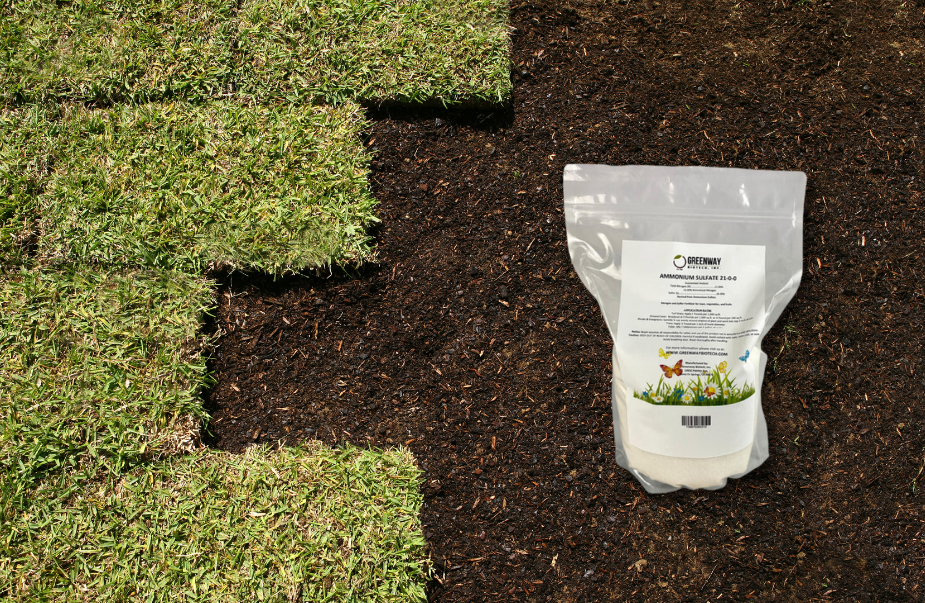How to Prep Your Soil for Grass Seed
•Posted on April 15 2022

A gorgeous green lawn is eye-catching and provides the perfect place for gatherings with family and friends.
The secret to achieving a beautiful grass lawn starts with the soil. This is where the grass seed gets its nutrients.
If you have problems with your soil, your grass won't grow correctly.
Learn how to prepare your soil for planting grass seed by following our simple guide.
We will explain each step of the process to help you achieve the lawn you want while avoiding common mistakes.
1. Test the Soil

The first step to achieving the lawn you want is to test the soil. A test can tell you the pH and if any key nutrients are lacking.
The scale ranges from 1 to 14, with 7 being neutral. Anything below 7 is acidic while above is alkaline.
Grass prefers a neutral pH of 6.5 to 7 to properly absorb nutrients, so if your readings are more acidic or alkaline, you must correct this.
Related Post: What You Need to Know About Soil pH
You can get a test kit or DIY with soil samples, some baking soda, and vinegar. Simply mix some water into a sample of soil and add ½ cup of vinegar.
If the soil reacts by foaming or bubbling, your soil is alkaline.
If you get a reaction by adding ½ cup of baking soda to a clean soil sample, this indicates your soil is alkaline.
2. Time it Right

The time of year that you plant is very important.
This varies depending upon the weather and the type of grass seed you are using.
Crabgrass does best when planted in the period between mid-January and late April.
In some areas, later plantings from spring into mid-summer are acceptable.
Recommended for Grass Growth:
3. Clear the Area of Debris

Once you are ready to begin planting, it's time to start preparing the planting area.
Do this by raking away sticks and debris. If there is old grass present, it's best to remove it before planting a new seed.
Related Post: How to Easily Determine Your Soil Type
4. Aerate the Soil

The next step is to aerate the soil by using a rotary tiller on the top six inches. This loosens any compacted areas and infuses the soil with oxygen.
Similarly, a lawn aerator can be used, but there are differences between the two.
A lawn aerator makes small holes in the grass to encourage oxygen intake at the roots, while a tiller mulches up the top layer of the soil to increase oxygen in the dirt.
It's recommended to only till the soil once a year, though.
5. Fertilize the Soil

Adding high-quality fertilizers and nutrients to the soil provides the best foundation for a thick, green carpet of grass to grow.
Mix the soil amendment into the area as directed.
Related Post: A Guide to Greener Grass - Selecting the Proper Fertilizer for Your Lawn
Recommended for Grass Growth:
6. Select the Best Grass Seed

If you want a great-looking lawn, start with a seed that's good quality. Sow the seed using a spreader for uniform growth.
Go back over the area to lightly cover the seed with soil using a rake.
For the best results, tamp the soil and cover it with a layer of straw or mulch to protect the seed.
7. Water the Newly Seeded Soil

Make sure your seed has what it needs by soaking the soil after the seeding. Continue to add water when the soil becomes dry.
Get Growing With Greenway
Fertilizers are an essential part of soil preparation for healthy and lush grass that will require a lawn mower soon enough!
We're committed to providing high-quality products to help you grow healthier gardens and lawns.
Our Ammonium Sulfate and Urea fertilizers are the perfect addition to your spring lawn care. Both the Ammonium Sulfate and Urea are high in nitrogen which promotes healthy green grass growth.
If you need help getting started contact us with any questions.
Our customer service team is always happy to assist you with anything you require.
Browse our fertilizers here to start growing a lawn that is sure to be the envy of your neighbors!
Comments
0 Comments
Leave a Comment